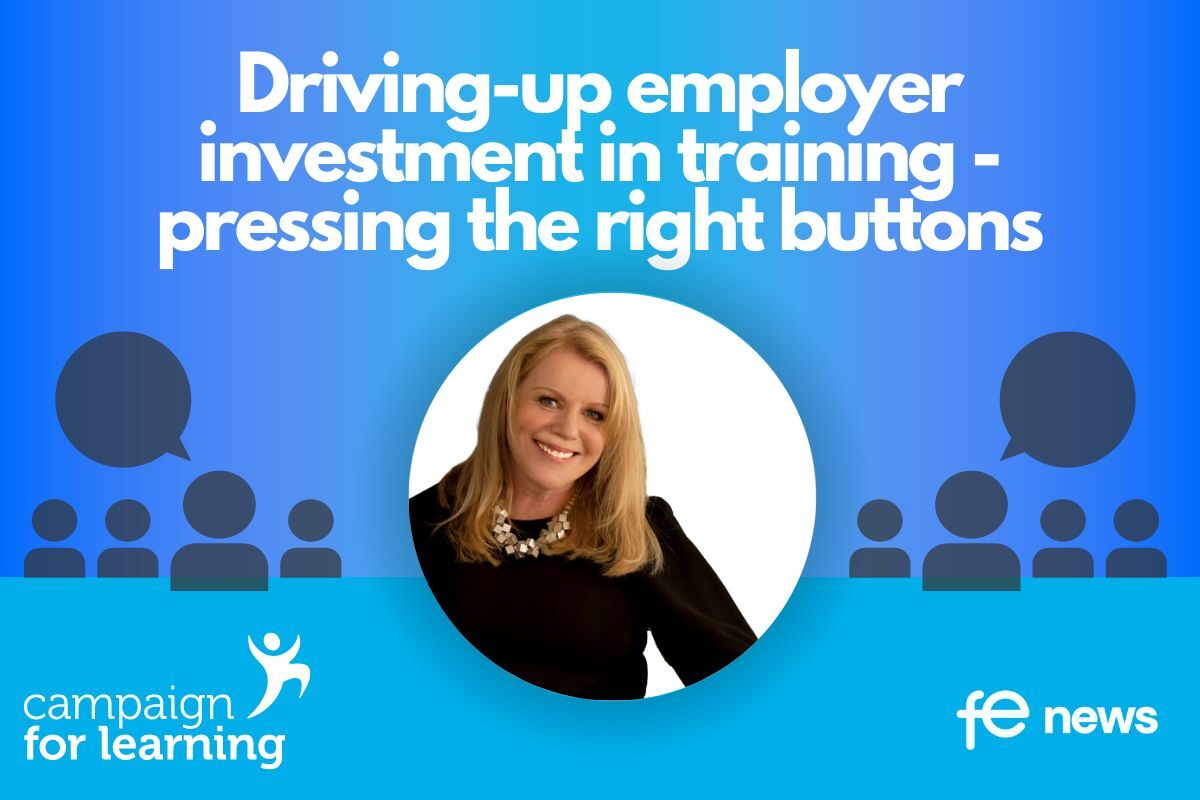Increasing employer demand for post-16 apprenticeships in England

We know that apprenticeships are great for learners of all ages and all levels. There is also significant demand from employers for apprentices, so supporting them to be able to employ apprentices must be at the heart of any strategy to deal with the country’s skills shortages.
It is without question that the most effective way to do this is to ensure much more is done to allow young people, entry-level learners, and small and medium sized employers (SMEs) to access apprenticeships more easily.
SMEs face significant barriers to accessing the apprenticeship system, but they are the businesses which historically have supported the majority of apprenticeships. Large employers unquestionably play their part, but the system needs to work for employers of all sizes, apprentices themselves and the wider economy. That is why measures to increase employer demand should focus on three main areas – protecting the Apprenticeship Levy, more targeted support for SMEs, and simplifying the system to reduce bureaucracy.
Protect the Apprenticeship Levy, but refine the wider system
The best skills systems around the world are employer-led, and a shift away from an institutional-led approach is a key principle that we support across the post-16 education system. The apprenticeship reforms – including the introduction of the levy – were designed to shift skills training towards an employer-led system. By nearly doubling investment into apprenticeships, the Apprenticeship Levy has been a real game-changer – apprenticeship funding is set to reach £2.7 billion by 2024-25.
Recently we have seen some misguided calls to reform the levy itself on that basis that it is not working. But the fact that the levy underspend is down to just £11m last year, from a budget of £2.5 billion – and therefore, a less than 1% underspend – proves that it is being used by employers. Focusing on watering down the levy is a simple distraction when it is the wider levy system that needs some adjustments.
Wider reform could help more SMEs access the system. Making it easier for larger firms to transfer their funds to smaller employers is just one example of reducing current friction that would help stimulate demand. However, one thing is key – there should be no change that shifts the levy away from investment in apprenticeship training and assessment only.
Accelerating the simplification project
The unnecessary burden placed on employers through bureaucracy is still a huge barrier for employers – particularly SMEs. We know that non-levy paying employers find it hard to navigate and access the apprenticeship system and that is clearly having an impact on take- up. This is why we are working closely with the Department for Education on their project to simplify the apprenticeship system, but we need to accelerate that project so that as much of that bureaucracy as possible is a thing of the past.
There are two obvious ways we can make progress on this. Firstly, we’ve previously called for an auto-enrolment system for employers on the apprenticeship service, which would go some way to reducing the administrative burden involved in getting started. Secondly, the apprenticeship funding rules themselves need to be urgently reviewed – these have gone from 50 pages to over 140 in recent years and have become too iterative. Obviously, we must have the right measures in place to ensure providers are accountable when receiving public money – but there must be a way to prevent this situation of overly bureaucratic rules.
Increasing support for smaller businesses to take on apprentices
The incentives made available through the Government’s Plan for Jobs were a fantastic success. Figures from December 2022 showed that close to 200,000 new jobs were supported – and 77% of these were for 16-24-year-olds. Interest from non-levy paying employers was also very strong during this period, with new vacancies on the Find an Apprenticeship system at an all-time high.
These types of cash incentives give employers the flexibility to choose how they invest that grant, whether as an indirect wage subsidy or investment in infrastructure to support the apprentice. To get the best value out of financial incentives, these must be targeted at smaller employers.
Apprenticeships remain the only part of the education system where 16-18 year olds are not fully funded by the state.
Along with other sector stakeholders, we believe that the current 5% employer co- investment should be waived for all non-levy paying employers, not just micro employers and should be funded from the Department for Education’s 16-19 budget.
Increasing employer demand for post-16 apprenticeships will be vital if we’re to fill skills shortages across England.
Recommendation 1
The Apprenticeship Levy should be used to fund apprenticeships only, with the system refined to help more SMEs access apprenticeships.
Recommendation 2
The 5% co-investment requirement for non-levy paying employers should be abolished across the board.
Recommendation 3
Additional support targeted at smaller businesses wishing to take on an apprentice should be made available over and above the 2024/25 budget of £2.7bn.
By Jane Hickie, Chief Executive, AELP
This article is part of Campaign for Learning’s series: ‘Driving-up employer investment in training – pressing the right buttons’.
Part One: Employer investment in context
- Louise Murphy, Economist, Resolution Foundation: Investment in the round
- Dr Vicki Belt, Deputy Director, Enterprise Research Centre, Warwick Business School: UK enterprises and investment in capital and training
- Becci Newton, Director, Public Policy Research, Institute of Employment Studies: Employer investment in training in England
Part Two: Drivers of employer investment in training
- Neil Carberry, Chief Executive, Recruitment and Employment Confederation: Derived demand, British management and employer investment in training
- Ewart Keep, Professor Emeritus, Education Department, University of Oxford: Strategies to drive-up employer investment in training
- Sam Alvis, Head of Economy, Green Alliance: Transitioning to net zero, green skills and employer investment in training
- Dan Lucy, Director of HR, Institute of Employment Studies: Job quality, job design and driving-up employer investment in training
- Natasha Waller, Policy Manager, LEP Network: Local inward investment, business support and employer demand for training
- Jovan Luzajic, Acting Assistant Director of Policy, Universities UK: Universities, R&D, business innovation and meeting employer skills needs
- David Hughes, Chief Executive, Association of Colleges: FE colleges, business innovation and meeting employer skills needs
Part Three: Increasing employer investment in training
- Paul Bivand, Labour Market Consultant: Why should employers invest in training in a flexible labour market?
- Aidan Relf, Skills Consultant: Why should employers invest in training with large net worker migration into the UK?
- Stephen Evans, Chief Executive, Learning and Work Institute: Raising employer investment in training
- Robert West, Head of Education and Skills, CBI: Increasing employer investment in training
- Lizzie Crowley, Skills Policy Adviser, CIPD: Encouraging employer demand for training
- Anthony Painter, Director and Daisy Hooper, Head of Policy and Innovation Chartered Management Institute: Increasing employer demand for management training
Part Four: Raising employer demand for publicly funded post-16 education and skills
- Jane Hickie, Chief Executive, AELP: Increasing employer demand for post-16 apprenticeships in England
- Mandy Crawford-Lee, Chief Executive, UVAC: Increasing employer demand for level 4-5 technical education in England
- Ian Pryce, Principal, The Bedford College Group: Increasing employer demand for higher technical education in England
Part Five: Raising employer demand for work placements
- John Widdowson, Board Member, NCG: Increasing employer demand for work placements for level 3-5 vocational courses in England
- Stephen Isherwood, Joint Chief Executive, Institute of Student Employers: Increasing employer demand for undergraduate work placements in England











Responses